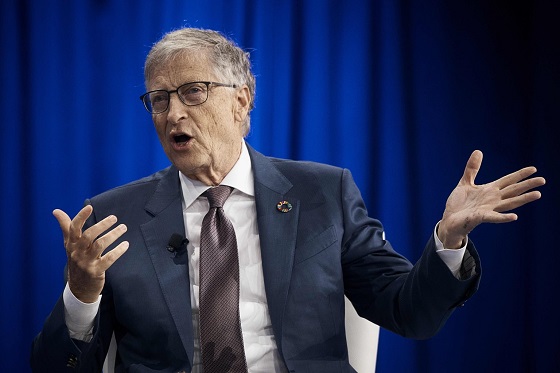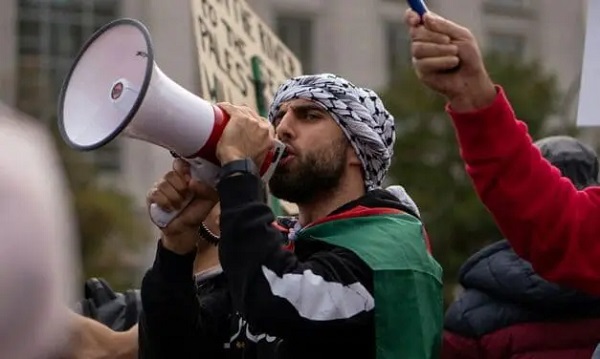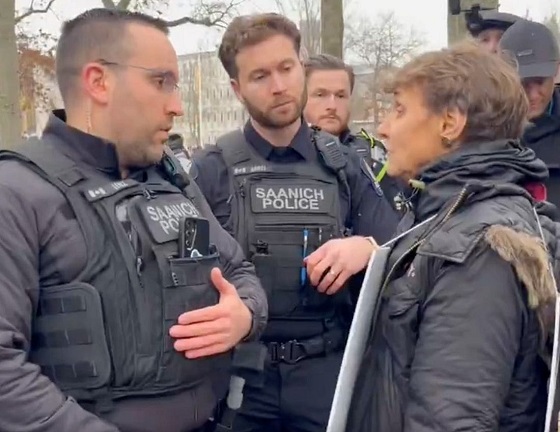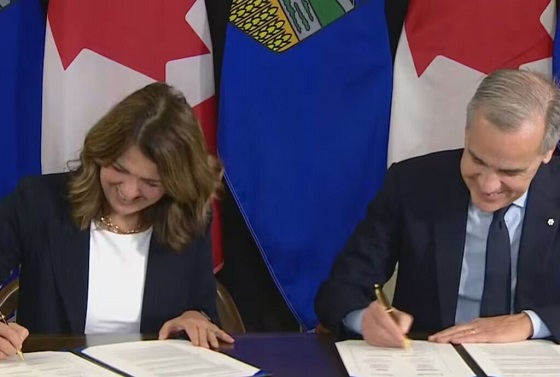Economy
Doug Ford – the Net Zero Premier

 By Dan McTeague
By Dan McTeague
Doug Ford came into power promising a change from the Kathleen Wynne Green Energy Act fiasco – the one which saddled Ontario taxpayers with costly green energy contracts, driving up the price of power. Ford promised to scrap those wasteful contracts, lower hydro rates, and restore affordability to Ontario. But as we take stock of his energy policies today, it seems Ford is steering Ontario down a path that feels a bit too familiar.
For all his talk about energy affordability, Ford continues to pander to the environmentalist “Net Zero” ideology that got Ontario into this mess in the first place. The idea is that somehow Canada will be a net zero emitter of greenhouse gas emissions by 2050. We have seen this play out at the Federal level, with the Trudeau Liberals implementing a host of reckless and punitive policies in the vain hopes of achieving this preposterous goal. You can thank Net Zero for Carbon Taxes, Emissions Caps, the Clean Fuel Standard, Electric Vehicle Mandates and on and on.
Instead of backing away and distancing himself from this scam, Doug Ford has embraced and doubled down on it. Recall that during a provincial leaders debate in June 2022, Ford stated that he will not be happy until Ontario achieves a 100% zero-carbon electricity grid, buying into the Net Zero electrification nonsense that the Trudeau government is pushing. This would mean moving away from fossil fuels like affordable and reliable natural gas as energy sources in Ontario.
Stephen Lecce, Ford’s minister of the recently renamed Ministry of Energy and Electrification, is full steam ahead on this project. And the ministry’s new name is significant, pointing towards an “energy transition” for Ontario, such that eventually everything – cars, home heating, etc. – will be run on electricity rather than traditional fuels.
Currently, about 20 per cent of Ontario’s energy needs are met by electricity, so where will this electricity come from, without fossil fuels? At a recent Empire Club event, Ford gave a fireside chat where he discussed Ontario’s electricity plan (you can hear the interview here). He spoke about the energy sector and his commitment to all low carbon options for Ontario’s electricity grid, including wind and solar. This marks a reversal of his earlier skepticism about these technologies. The irony is that Ontario taxpayers are still paying for the expensive legacy of earlier wind and solar government spending. Wasting more taxpayer dollars will mean more of the following: higher energy costs, decreased grid reliability, and growing public debt.
As energy expert Parker Gallant has pointed out, the costs of wind power alone have been staggering, with taxpayers footing the bill for inefficient projects that deliver intermittent power. Doubling down on these same strategies, even under a different name, does little to address affordability or reliability.
Ford has hitched his horse fully to the Net Zero wagon. According to his government’s policy document Planning for electrification and the energy transition: “Much of the world – including many of Ontario’s major trading partners – have committed to achieving economy-wide carbon neutrality by 2050.” Consequently, it recommends that Ontario adopt similar Net Zero strategies, as doing so allegedly contributes “to the global climate solution and thereby sets the province up to succeed and prosper in the emerging global clean energy economy.”
These claims didn’t make sense when they were made five years ago and they make even less sense today. Afterall, Ontario’s largest trading partner to the South has just elected Donald Trump whose policy approach to energy can be summarized by the phrase, “Drill Baby Drill.” We can expect that one of Trump’s first acts as president will be to (once again) exit the Paris Agreement. Trump has no intention of drinking the Net Zero KoolAid, though he will no doubt be happy to have America’s competitors like Canada burden themselves with unnecessary environmental commitments and regulations, which will drive up the cost of doing business and make “made in America” a much more attractive brand. Competitiveness and affordability in Canada can go out the window as manufacturers and businesses will start looking South as the more attractive business environment.
While Trump seeks to unleash the United States’ energy potential, Ford will only stifle Ontario’s. Which is to say, Ford is setting Ontario up for failure. Now that is a real net zero.
Dan McTeague is President of Canadians for Affordable Energy.
Business
The world is no longer buying a transition to “something else” without defining what that is

From Resource Works
Even Bill Gates has shifted his stance, acknowledging that renewables alone can’t sustain a modern energy system — a reality still driving decisions in Canada.
You know the world has shifted when the New York Times, long a pulpit for hydrocarbon shame, starts publishing passages like this:
“Changes in policy matter, but the shift is also guided by the practical lessons that companies, governments and societies have learned about the difficulties in shifting from a world that runs on fossil fuels to something else.”
For years, the Times and much of the English-language press clung to a comfortable catechism: 100 per cent renewables were just around the corner, the end of hydrocarbons was preordained, and anyone who pointed to physics or economics was treated as some combination of backward, compromised or dangerous. But now the evidence has grown too big to ignore.
Across Europe, the retreat to energy realism is unmistakable. TotalEnergies is spending €5.1 billion on gas-fired plants in Britain, Italy, France, Ireland and the Netherlands because wind and solar can’t meet demand on their own. Shell is walking away from marquee offshore wind projects because the economics do not work. Italy and Greece are fast-tracking new gas development after years of prohibitions. Europe is rediscovering what modern economies require: firm, dispatchable power and secure domestic supply.
Meanwhile, Canada continues to tell itself a different story — and British Columbia most of all.
A new Fraser Institute study from Jock Finlayson and Karen Graham uses Statistics Canada’s own environmental goods and services and clean-tech accounts to quantify what Canada’s “clean economy” actually is, not what political speeches claim it could be.
The numbers are clear:
- The clean economy is 3.0–3.6 per cent of GDP.
- It accounts for about 2 per cent of employment.
- It has grown, but not faster than the economy overall.
- And its two largest components are hydroelectricity and waste management — mature legacy sectors, not shiny new clean-tech champions.
Despite $158 billion in federal “green” spending since 2014, Canada’s clean economy has not become the unstoppable engine of prosperity that policymakers have promised. Finlayson and Graham’s analysis casts serious doubt on the explosive-growth scenarios embraced by many politicians and commentators.
What’s striking is how mainstream this realism has become. Even Bill Gates, whose philanthropic footprint helped popularize much of the early clean-tech optimism, now says bluntly that the world had “no chance” of hitting its climate targets on the backs of renewables alone. His message is simple: the system is too big, the physics too hard, and the intermittency problem too unforgiving. Wind and solar will grow, but without firm power — nuclear, natural gas with carbon management, next-generation grid technologies — the transition collapses under its own weight. When the world’s most influential climate philanthropist says the story we’ve been sold isn’t technically possible, it should give policymakers pause.
And this is where the British Columbia story becomes astonishing.
It would be one thing if the result was dramatic reductions in emissions. The provincial government remains locked into the CleanBC architecture despite a record of consistently missed targets.
Since the staunchest defenders of CleanBC are not much bothered by the lack of meaningful GHG reductions, a reasonable person is left wondering whether there is some other motivation. Meanwhile, Victoria’s own numbers a couple of years ago projected an annual GDP hit of courtesy CleanBC of roughly $11 billion.
But here is the part that would make any objective analyst blink: when I recently flagged my interest in presenting my research to the CleanBC review panel, I discovered that the “reviewers” were, in fact, two of the key architects of the very program being reviewed. They were effectively asked to judge their own work.
You can imagine what they told us.
What I saw in that room was not an evidence-driven assessment of performance. It was a high-handed, fact-light defence of an ideological commitment. When we presented data showing that doctrinaire renewables-only thinking was failing both the economy and the environment, the reception was dismissive and incurious. It was the opposite of what a serious policy review looks like.
Meanwhile our hydro-based electricity system is facing historic challenges: long term droughts, soaring demand, unanswered questions about how growth will be powered especially in the crucial Northwest BC region, and continuing insistence that providers of reliable and relatively clean natural gas are to be frustrated at every turn.
Elsewhere, the price of change increasingly includes being able to explain how you were going to accomplish the things that you promise.
And yes — in some places it will take time for the tide of energy unreality to recede. But that doesn’t mean we shouldn’t be improving our systems, reducing emissions, and investing in technologies that genuinely work. It simply means we must stop pretending politics can overrule physics.
Europe has learned this lesson the hard way. Global energy companies are reorganizing around a 50-50 world of firm natural gas and renewables — the model many experts have been signalling for years. Even the New York Times now describes this shift with a note of astonishment.
British Columbia, meanwhile, remains committed to its own storyline even as the ground shifts beneath it. This isn’t about who wins the argument — it’s about government staying locked on its most basic duty: safeguarding the incomes and stability of the families who depend on a functioning energy system.
Resource Works News
Business
Brutal economic numbers need more course corrections from Ottawa

From the Fraser Institute
By Matthew Lau
Canada’s lagging productivity growth has been widely discussed, especially after Bank of Canada senior deputy governor Carolyn Rogers last year declared it “an emergency” and said “it’s time to break the glass.” The federal Liberal government, now entering its eleventh year in office, admitted in its recent budget that “productivity remains weak, limiting wage gains for workers.”
Numerous recent reports show just how weak Canada’s productivity has been. A recent study published by the Fraser Institute shows that since 2001, labour productivity has increased only 16.5 per cent in Canada vs. 54.7 per cent in the United States, with our underperformance especially notable after 2017. Weak business investment is a primary reason for Canada’s continued poor economic outcomes.
A recent McKinsey study provides worrying details about how the productivity crisis pervades almost all sectors of the economy. Relative to the U.S., our labour productivity underperforms in: mining, quarrying, and oil and gas extraction; construction; manufacturing; transportation and warehousing; retail trade; professional, scientific, and technical services; real estate and rental leasing; wholesale trade; finance and insurance; information and cultural industries; accommodation and food services; utilities; arts, entertainment and recreation; and administrative and support, waste management and remediation services.
Canada has relatively higher labour productivity in just one area: agriculture, forestry, fishing and hunting. To make matters worse, in most areas where Canada’s labour productivity is less than American, McKinsey found we had fallen further behind from 2014 to 2023. In addition to doing poorly, Canada is trending in the wrong direction.
Broadening the comparison to include other OECD countries does not make the picture any rosier—Canada “is growing more slowly and from a lower base,” as McKinsey put it. This underperformance relative to other countries shows Canada’s economic productivity crisis is not the result of external factors but homemade.
The federal Liberals have done little to reverse our relative decline. The Carney government’s proposed increased spending on artificial intelligence (AI) may or may not help. But its first budget missed a clear opportunity to implement tax reform and cuts. As analyses from the Fraser Institute, University of Calgary, C.D. Howe Institute, TD Economics and others have argued, fixing Canada’s uncompetitive tax regime would help lift productivity.
Regulatory expansion has also driven Canada’s relative economic decline but the federal budget did not reduce the red tape burden. Instead, the Carney government empowered cabinet to decide which large natural resource and infrastructure projects are in the “national interest”—meaning that instead of predictable transparent rules, businesses must answer to the whims of politicians.
The government has also left in place many of its Trudeau-era environmental regulations, which have helped push pipeline investors away for years. It is encouraging that a new “memorandum of understanding” between Ottawa and Alberta may pave the way for a new oil pipeline. A memorandum of undertaking would have been better.
Although the government paused its phased-in ban on conventionally-powered vehicle sales in the face of heavy tariff-related headwinds to Canada’s automobile sector, it still insists that all new light-duty vehicle sales by 2035 must be electric. Liberal MPs on the House of Commons Industry Committee recently voted against a Conservative motion calling for repeal of the EV mandate. Meanwhile, Canadian consumers are voting with their wallets. In September, only 10.2 per cent of new motor vehicle sales were “zero-emission,” an ominous18.2 per cent decline from last year.
If the Carney government continues down its current path, it will only make productivity and consumer welfare worse. It should change course to reverse Canada’s economic underperformance and help give living standards a much-needed boost.
-

 National1 day ago
National1 day agoCanada’s free speech record is cracking under pressure
-

 Business1 day ago
Business1 day agoAlbertans give most on average but Canadian generosity hits lowest point in 20 years
-

 Digital ID19 hours ago
Digital ID19 hours agoCanada considers creating national ID system using digital passports for domestic use
-

 Business1 day ago
Business1 day agoTaxpayers Federation calls on politicians to reject funding for new Ottawa Senators arena
-

 Crime2 days ago
Crime2 days agoU.S. seizes Cuba-bound ship with illicit Iranian oil history
-

 Daily Caller2 days ago
Daily Caller2 days agoUS Supreme Court Has Chance To End Climate Lawfare
-

 Bruce Dowbiggin1 day ago
Bruce Dowbiggin1 day agoCarney Hears A Who: Here Comes The Grinch
-

 International1 day ago
International1 day ago100 Catholic schoolchildren rescued, Nigeria promises release of remaining hostages










